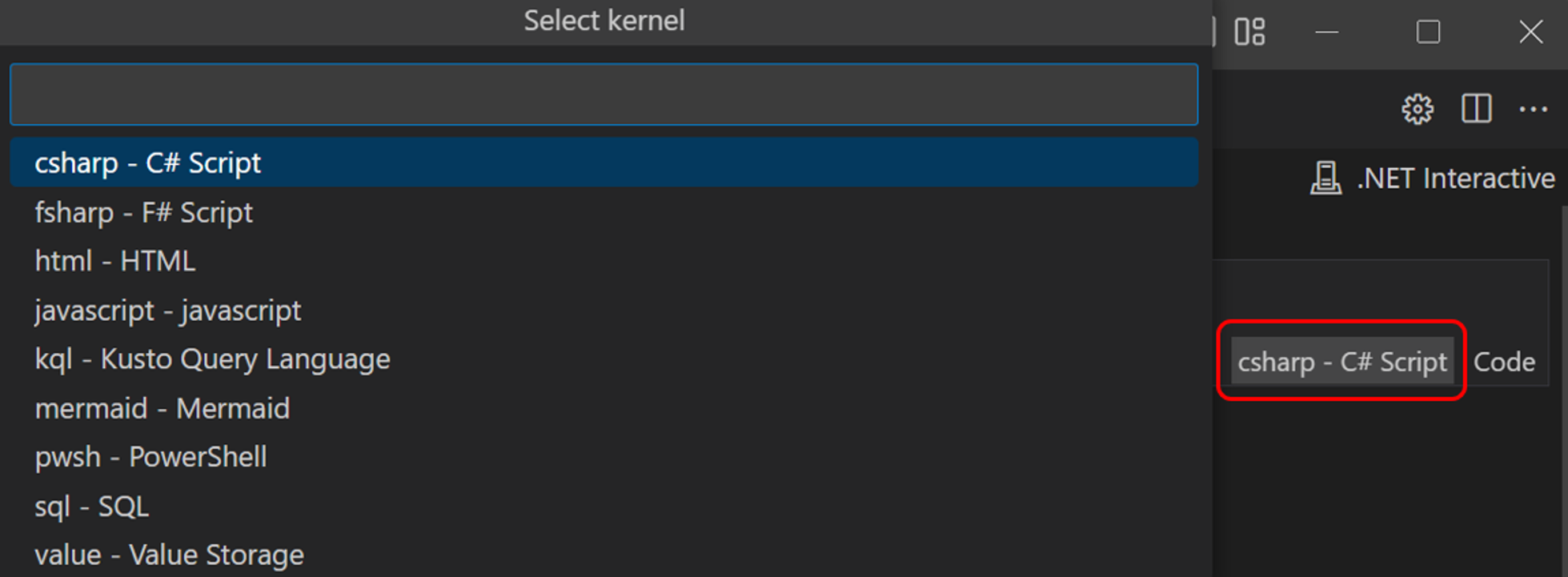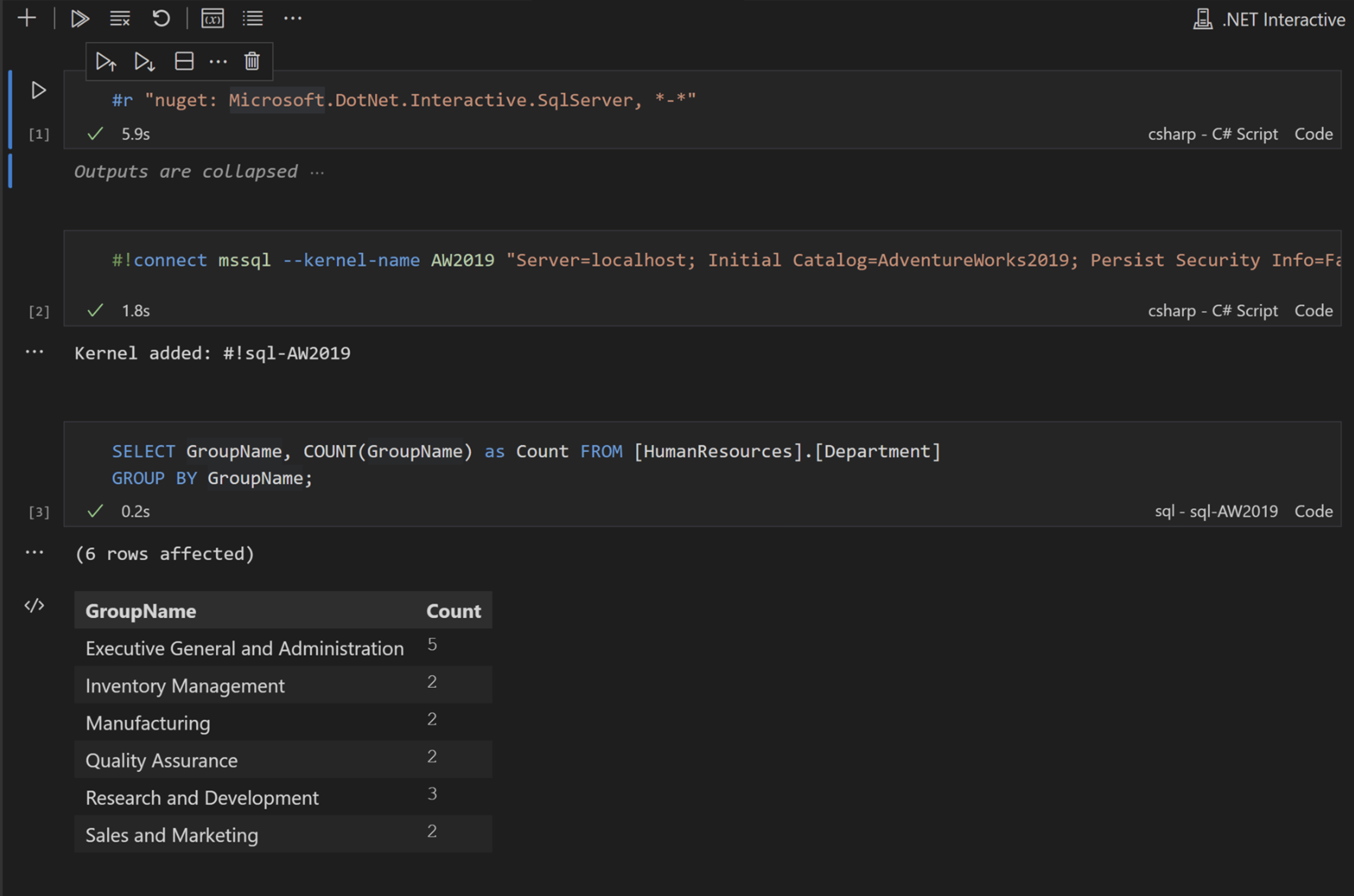Work across languages in one notebook.
Microsoft's Polyglot Notebooks bring C#, F#, PowerShell, JavaScript/TypeScript, SQL and more together inside VS Code. Mix languages, share variables, visualize data, create diagrams, and ship repeatable, runnable docs — all in a familiar, Jupyter-like notebook experience.






